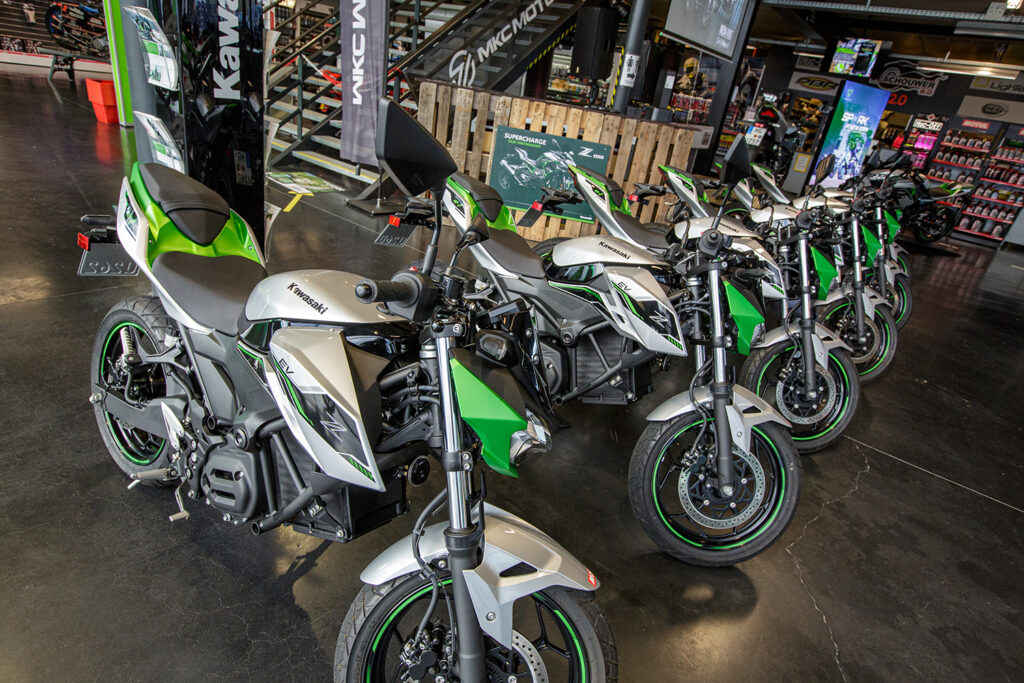Kawasaki has taken the lead of its fellow “Big 4” colleagues in releasing a full range of electric motorbikes, including two hybrids (the Ninja 7 Hybrid and the recently unveiled Z7 Hybrid at EICMA in 2023). With their fully electric models – the Z e-1 and the Ninja e-1 – Kawasaki is aiming at a new Urban Mobility audience. THE PACK tested out the Z e-1 in Brussels today, in both dry and typically Belgian rainy weather. Don’t expect a super naked bike, instead look for a refined, controllable and light electric motorbike.
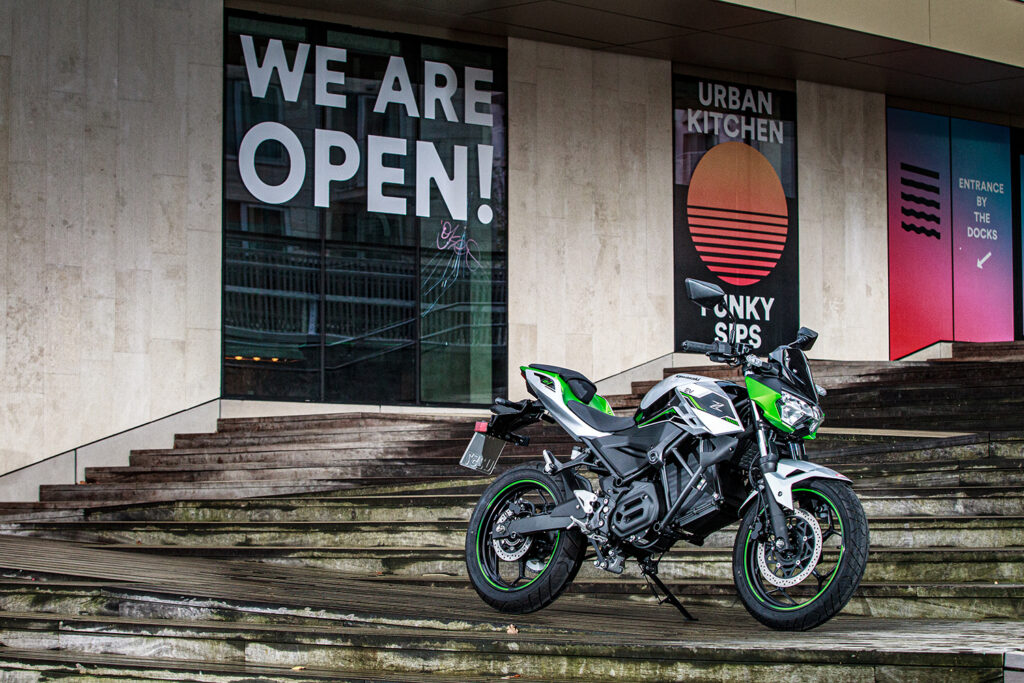
Kawasaki Z e-1
This Kawasaki model is similar to a traditional 125cc motorcycle, which can be beneficial if you own a Belgian driver’s license B; no specific motorbike license is required (for more information on what vehicles you can drive with your Belgian driver’s license B, visit the website of the Flemish Government). In The Netherlands, you need an A1 driver’s license.
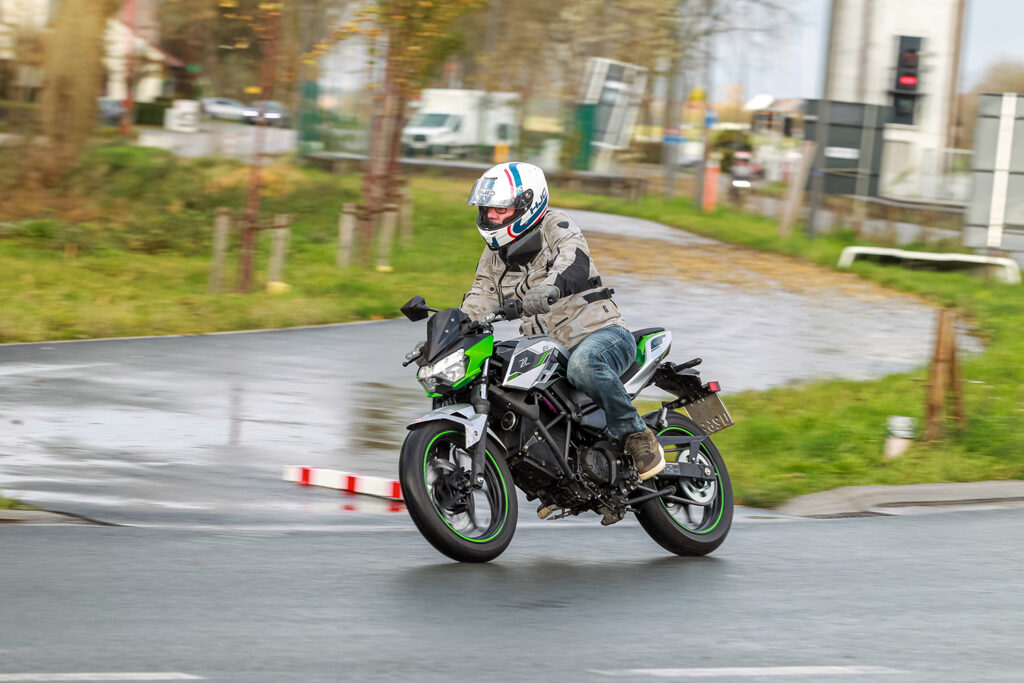
As previously stated, this is not a high-powered bike, but that was never the plan from Kawasaki. The Z e-1 has a modest engine that ensures a pleasant and easy drive in the city. This motor runs at a quiet 5.0 kW (9.0 kW peak), with a smooth take-off and gentle acceleration. The motorbike is very maneuverable with its wide handlebars and you certainly want to use the e-boost feature. That’s an exciting new reflex for your thumb to get used to. Additionally, I like using regeneration when driving around town; you can have full control with one hand. And, the battery gets some recharge whilst driving.
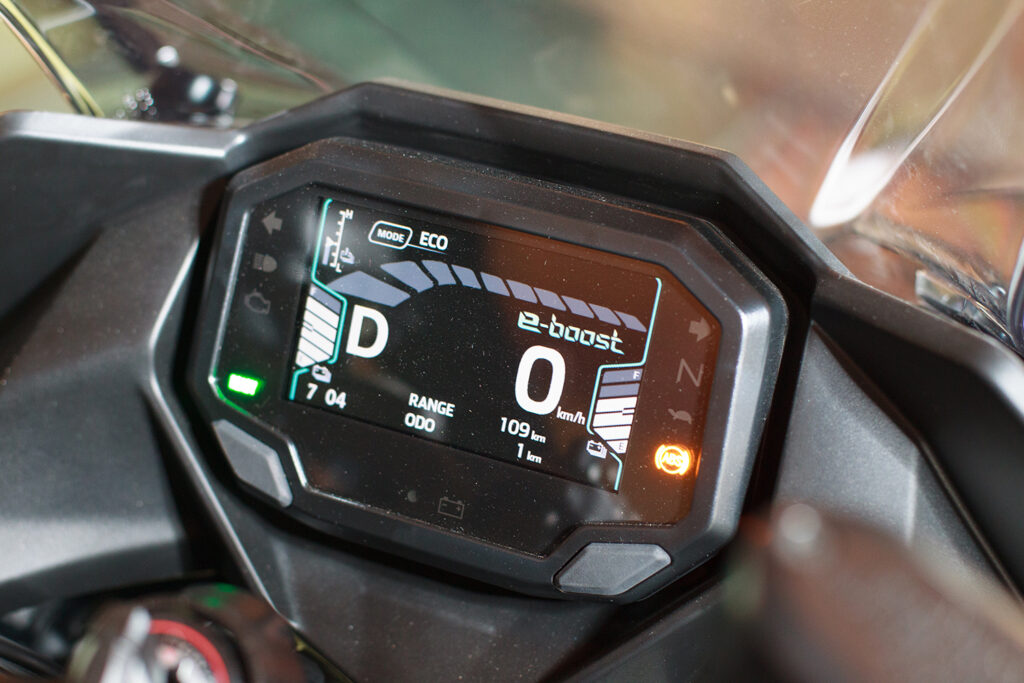
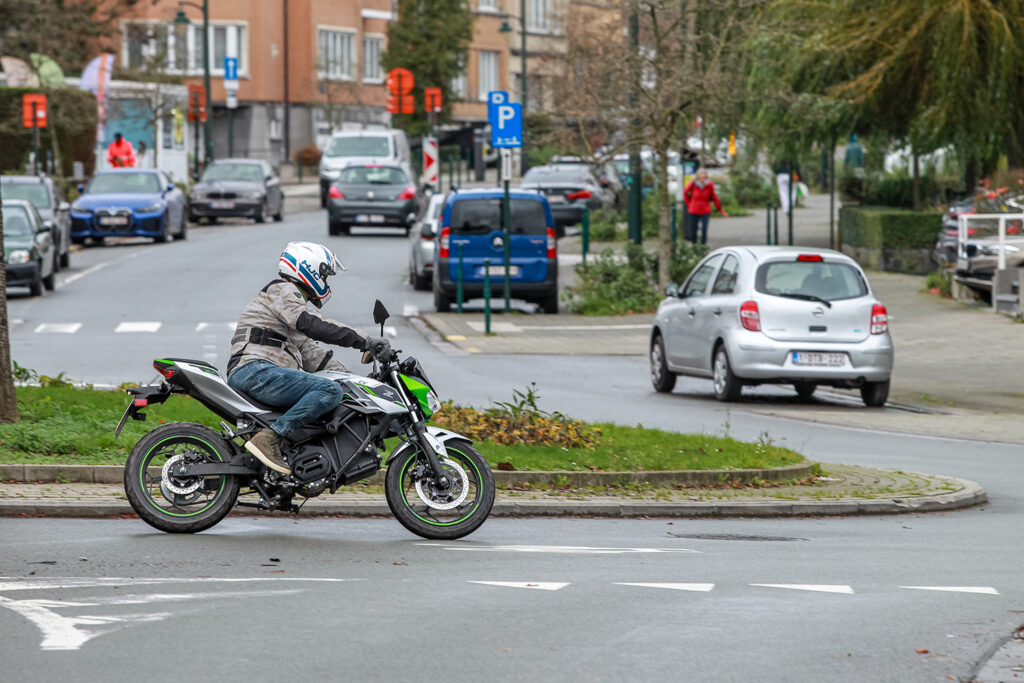
The Z e-1 also never surprised me with any unexpected behavior, even when I drove on slippery roads covered with rain, leaves and mud. My only (personal) issue was my leg position (I had a knee surgery so I can’t bend one of my legs for long periods of time). Furthermore, the absence of a USB port as a standard feature was quite strange. But a USB outlet is already available as an accessoire (see picture below). Even though it’s merely a detail, it seems outdated for an electric motorbike not to be keyless as such. But these are minor critiques.
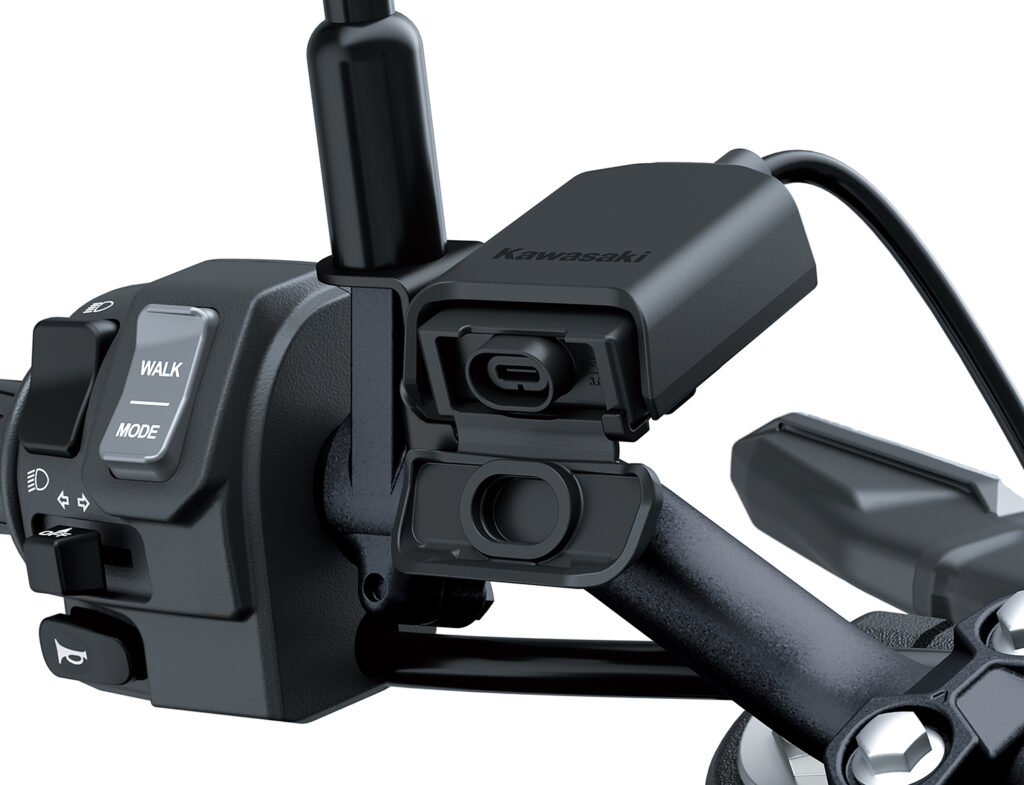
I get nervous whenever I hear strange noises or disruptive sounds while riding. Luckily, this Kawasaki Z e-1 was extremely quiet just as an electric motorbike should be. During my test ride, I drove along the cobble stone roadway at Tour & Taxis in Brussels several times and the bike did not make any loud squealing noises. And the front wheel feels securely fastened to the ground, perfect for maneuvering in the city.
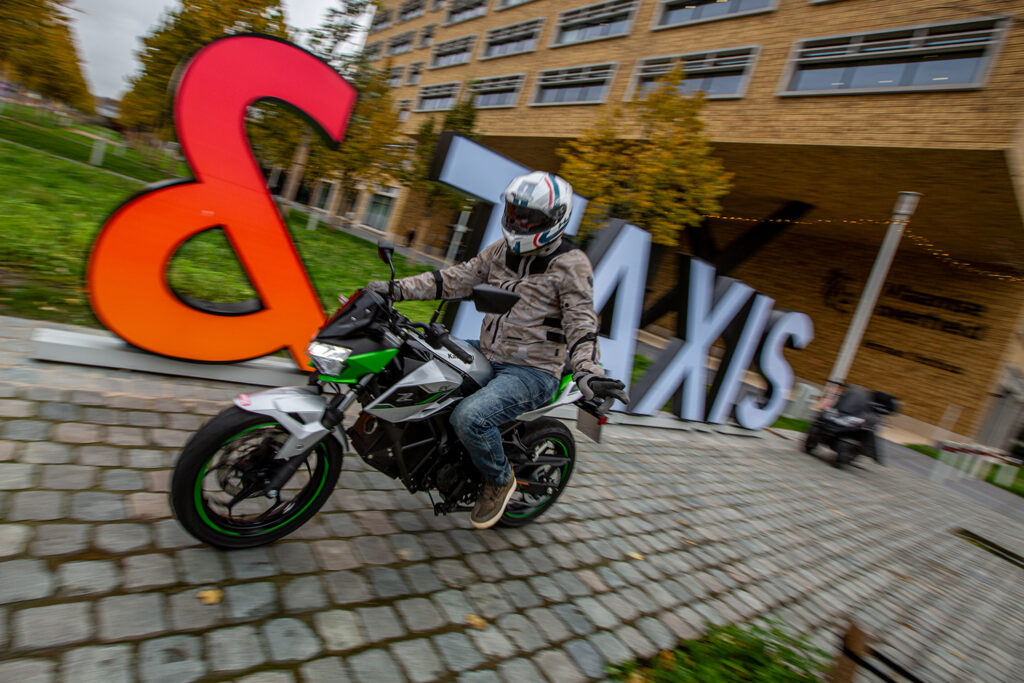
Urban Mobility
Kawasaki clearly designed this electric motorbike with commuters in mind. This Z e-1 is made explicitly for living in the city. With its limited range of 72 km and a top speed of 85 km/h, the Kawasaki does not fare well on highways, making it ideal for urban riders only. The batteries are removable, so they can be charged easily at home.
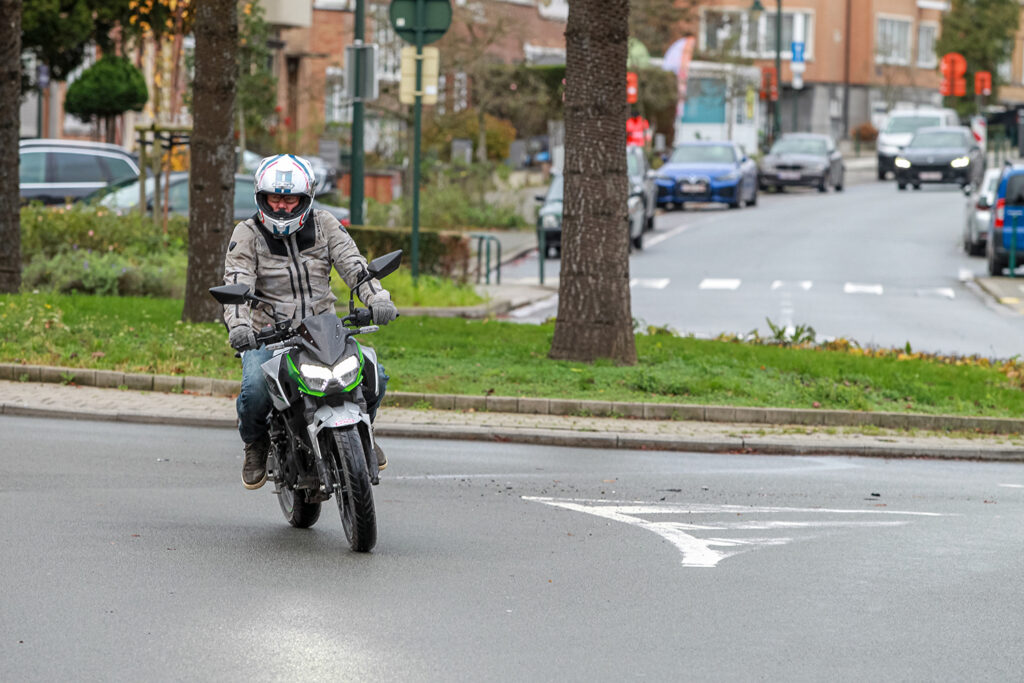
When you open the storage cover of the Kawasaki Z e-1, you find five litres of space for more lightweight items such as gloves or rain gear (no heavier than three kilograms). This motorbike’s lack of clutch makes it ideal for new riders and its low weight of just 135 kilograms makes it easy to maneuver. To top it off, it even includes a ‘WALK Mode’.
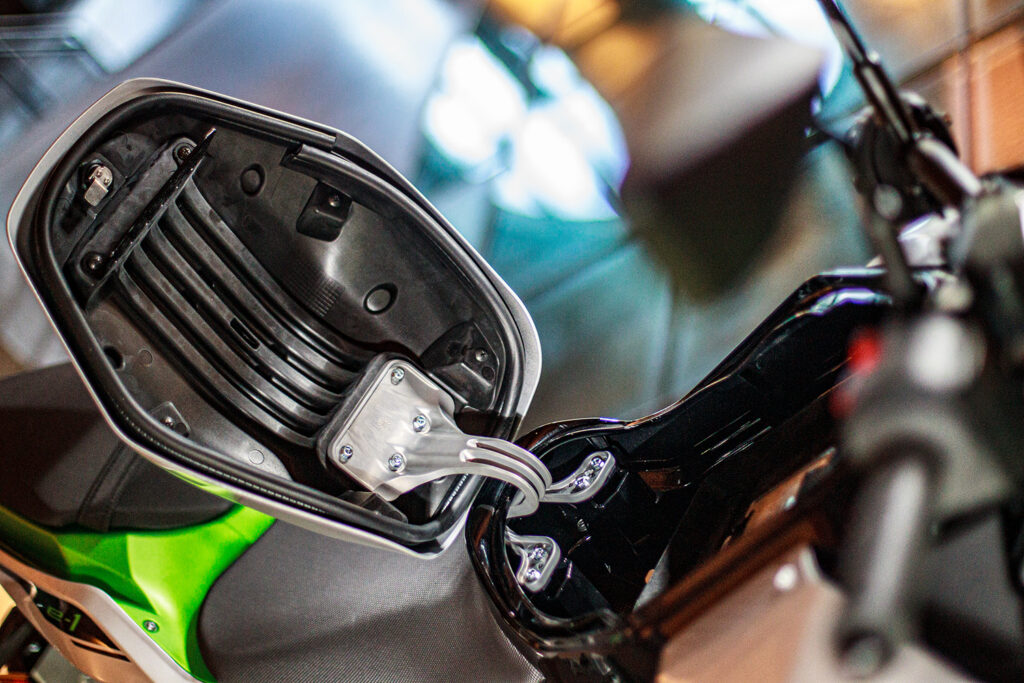
Kawasaki has already released several accessories for the Z e-1 at launch, including a meter cover, USB outlet, ERGO-FIT high seat (+30 mm), tank pad, scratch resistant film for the TFT meter, pillion seat cover, wheel rim tape, U-lock, and helmet lock.
Dual Removable Batteries
Instead of carrying around a single bulky battery, the Z e-1 uses two lightweight lithium-ion batteries in parallel. Each one weighs 11.5 kg, making it easier to move them around. To charge them, you can either use the standard option or take advantage of other options for added flexibility. Both batteries are located beneath the storage box and can be easily removed without needing to disconnect any fuses or switches – simply open the storage box cover, then open the battery cover and pull them out. Pushing a button on the top of the battery reveals its state of charge in a window.
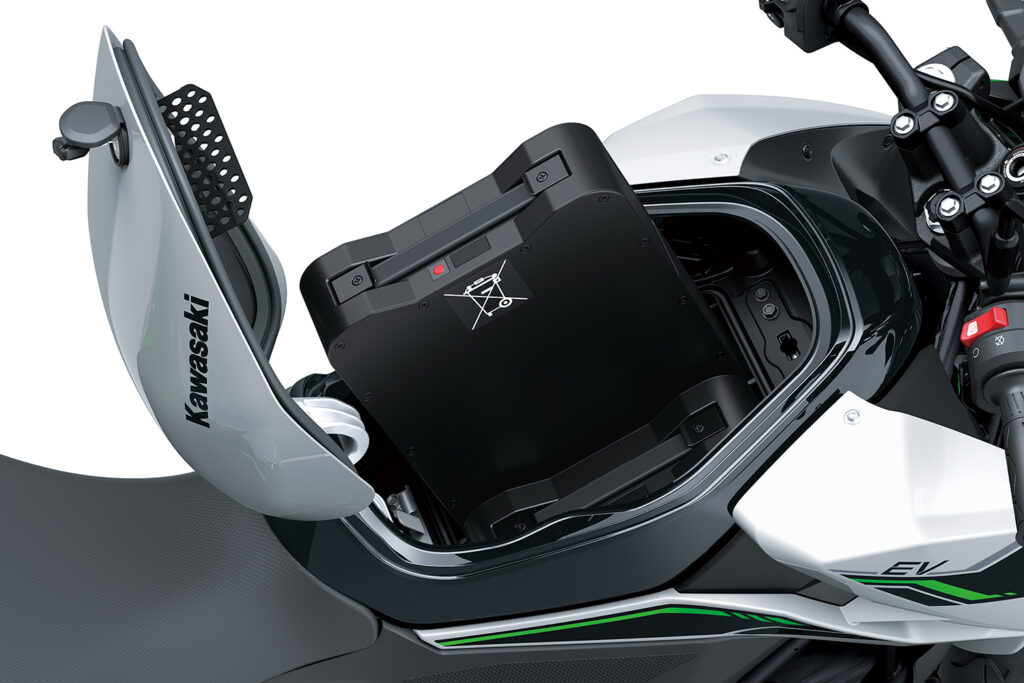
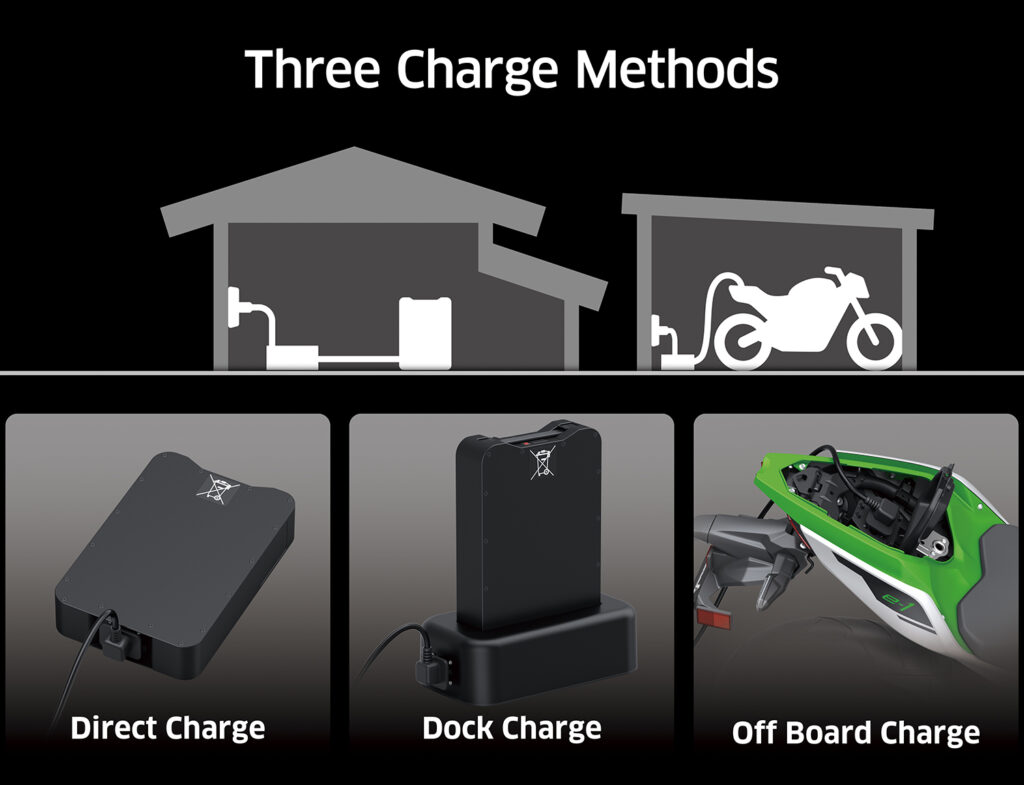
Charging time per battery is approximately 3.7 hours for a full (0% >> 100%) charge, 1.6 hours for a partial (20% >> 85%) charge. (Note: charging time per battery for a typical (20% >> 100%) charge after use is approximately 3 hours depending on conditions.)
- Motor Type: Air-cooled, interior permanent magnet synchronous motor
- Battery type: Lithium-ion battery pack x2
- Nominal Voltage: 50.4 V
- Total Nominal Capacity: 30 Ah x2
- Total battery weight: 11.5 kg x2
- Charging time (0 to 100%): 3.7 h x2
Drive modi
When riding, you can opt for either normal operation (ROAD), or limit the speed to conserve energy (ECO). Keep in mind when using ECO, you’ll get a slower top speed and more subdued response than using the ROAD Mode. You can switch between modes on the bike by using the Mode switch on the left handle. It’s possible to do this while riding, but make sure to keep a closed throttle (I forgot this a few times). When the battery’s charge falls to 34% or lower, the machine will switch into limited-power operation (as indicated by a turtle icon on its display), and the e-boost feature won’t work anymore.
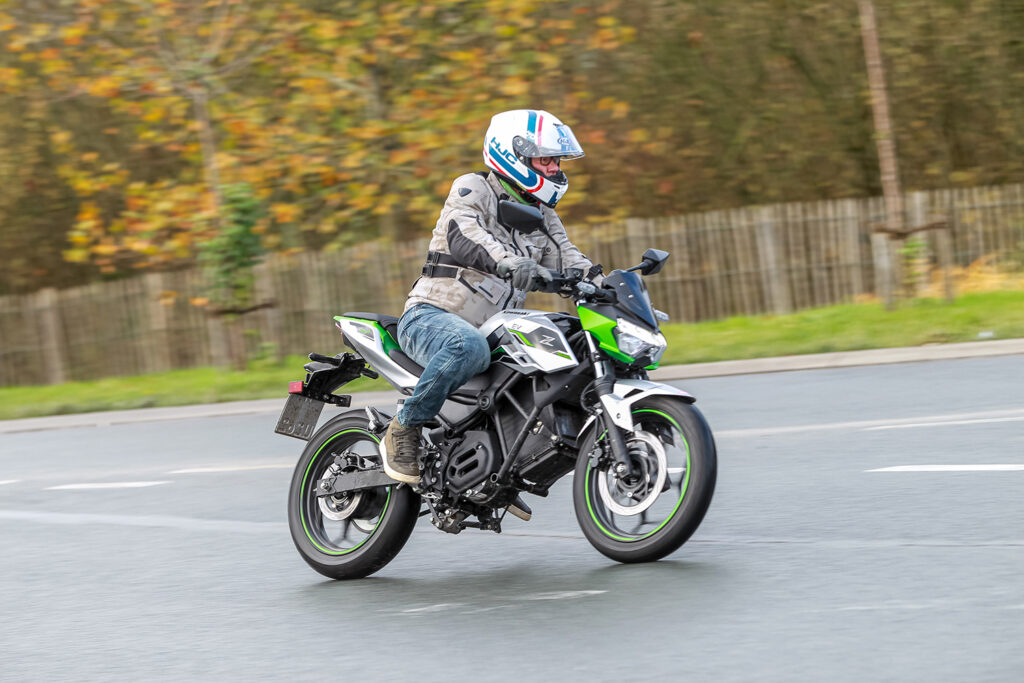
Performance
- ECO Mode: 62 km/h
- ECO Mode + e-boost: 72 km/h
- ROAD Mode: 85 km/h
- ROAD Mode + e-boost: 99 km/h
- Electric consumption: 49 Wh/km [WMTC Class 1]
- Range: 72 km [WMTC Class 1]
- Rated power: 5.0 kW {6.8 PS} / 2,800 min-1
- Max. power: 9.0 kW {12 PS} / 2,600-4,000 min-1
- Max. torque: 40.5 N·m {4.1 kgƒ·m} / 0-1,600 min-1
Drivetrain
- Driving system: Chain
- Transmission: –
- Primary reduction ratio: 3.211 (61/19)
- Final reduction ratio: 3.867 (58/15)
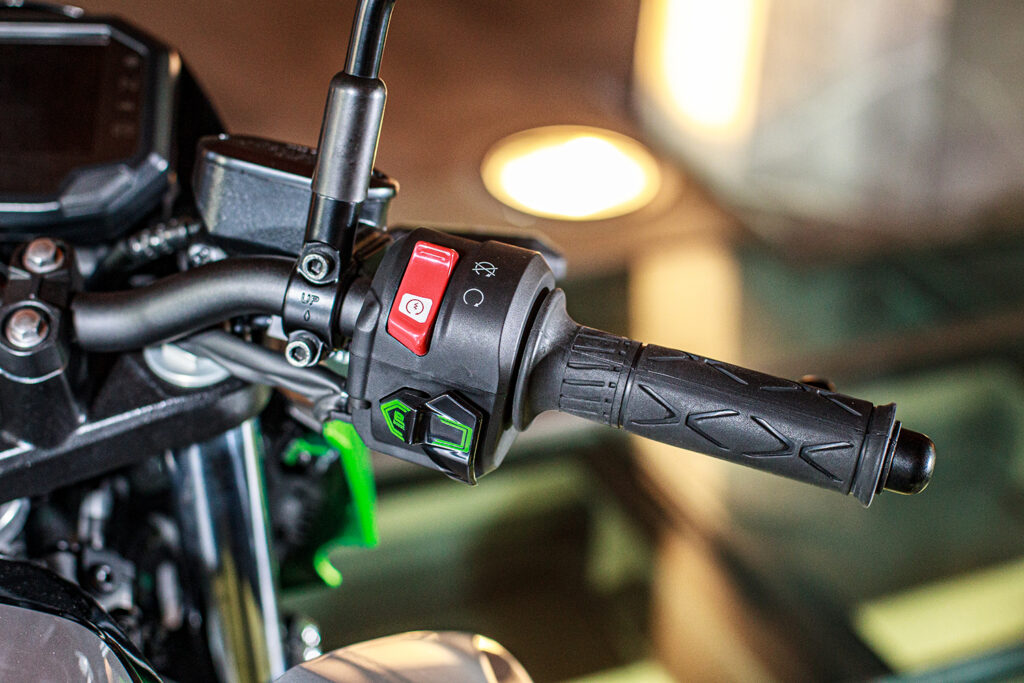
E-boost function
This was fun! With e-boost, you add an additional power for a boost in acceleration and an extra high top speed. The function will only last 15 seconds before it needs to cool off. When engaged, twisting the throttle will cause a more dramatic surge forward and the maximum velocity can reach up to 72 km/h (ECO) or 99 km/h (ROAD).
WALK Mode (with Reverse)
To activate WALK Mode, the bike must be stationary with the throttle OFF. Press and hold the Mode button to do so; when successfully activated, the screen background turns red for easy identification. When enabled, pushing the throttle up gives a slower acceleration of around 5 km/h while pulling it back past zero runs the bike in reverse at 3 km/h.
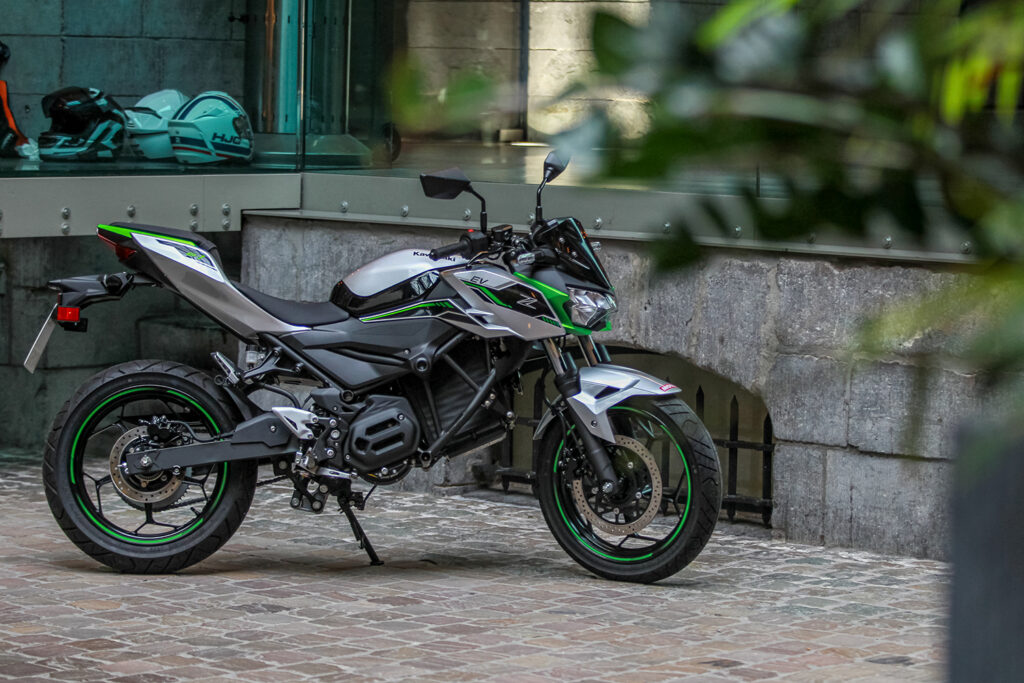
Dimensions
- Overall length: 1,980 mm
- Overall width: 730 mm
- Overall height: 1,035 mm
- Wheelbase: 1,370 mm
- Road clearance: 170 mm
- Seat height: 785 mm
- Curb mass (with batteries): 135 kg
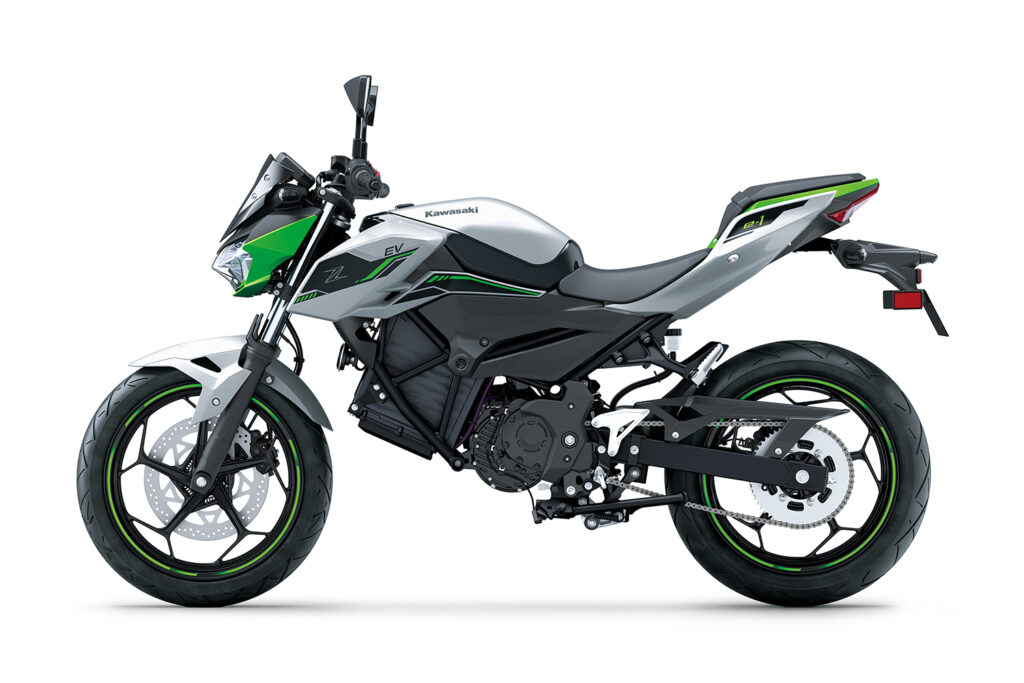
Regenerative System
As the rider eases off the throttle, the regenerative system recycles the energy of deceleration back to the battery. This helps give the vehicle a longer range between charges. (Once the batteries near their maximum capacity, the regeneration gradually decreases.)
Lightweight Trellis Frame
The Z e-1 has a trellis frame similar to that of Kawasaki’s top-tier motorcycle, the Ninja H2. Kawasaki used its refined dynamic rigidity analysis in order to ensure the best balance between stiffness and light weight. This trellis frame design helps the bike maintain a low weight.
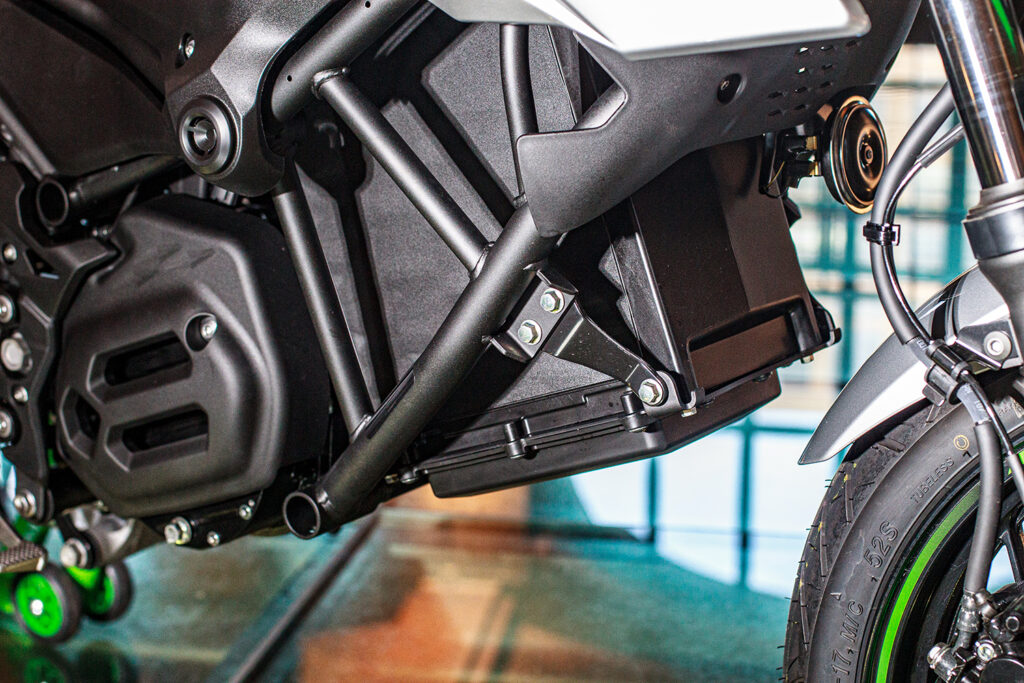
Suspension
An ø41 mm telescopic fork provides outstanding suspension. The Uni Trak rear suspension adds to the easy-to-handle feel of the motorbike, thanks to its damping effects that smooth over bumps in the road. The linkage layout settings (swingarm, tie-rods) make sure that variations in street surfaces are taken into consideration. The shock absorber has a 65 mm stroke, which strikes the perfect balance between lightweight performance and comfort. With 4-way adjustability for the rear suspension, riders can easily adjust the ride height or set up the bike to handle a passenger or luggage.
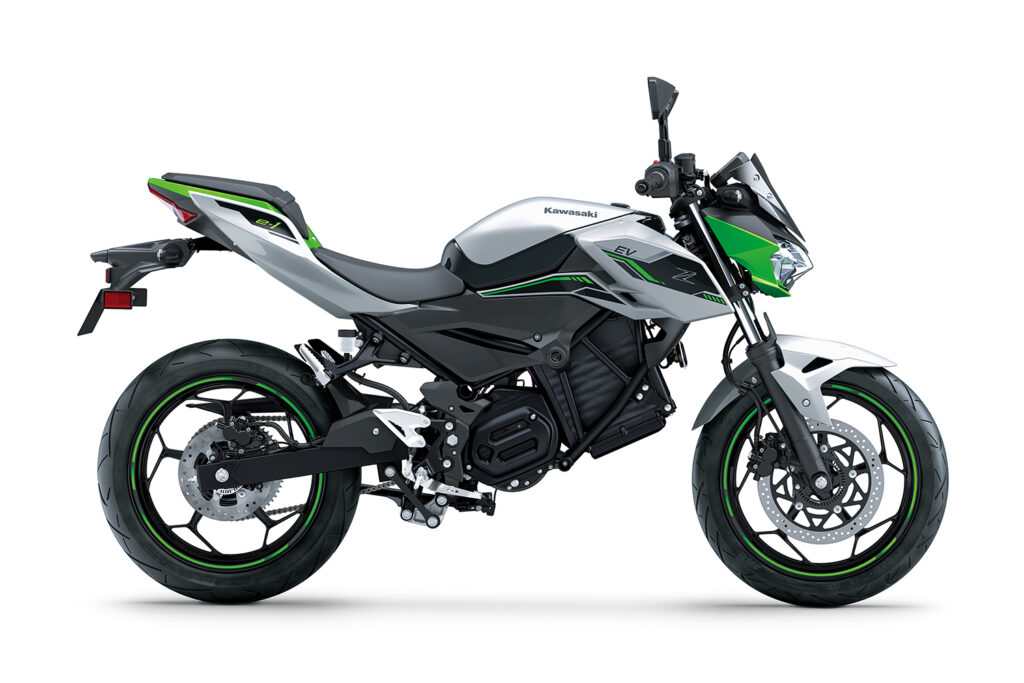
Brakes / wheels / tyres
The brakes were designed to give the rider a smooth, precise brake feel. The Nissin ABS control unit is designed specifically for motorcycles and is small and lightweight. The 17″ wheels have a sporty look that enhances the bike’s agility, and the slim tyres optimise its handling capabilities.
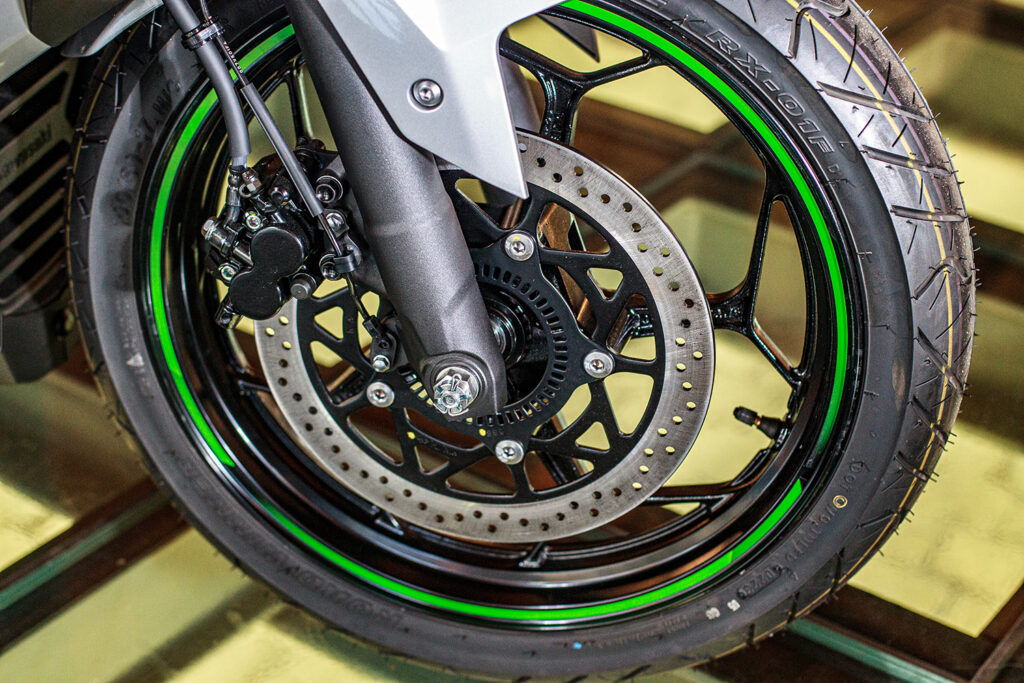
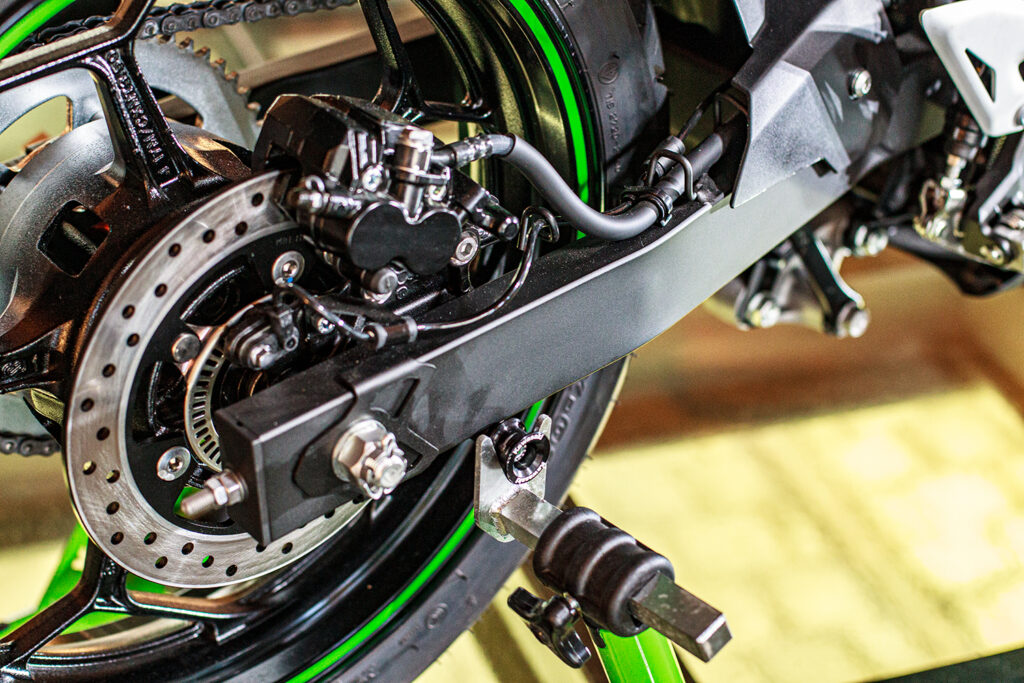
- Wheel travel Front: 120 mm
- Wheel travel Rear: 133 mm
- Caster (Rake angle): 24.4°
- Trail: 93 mm
- Steering angle (left/right): 35° / 35°
- Tyre front 100/80-17M/C 52S
- Tyre rear: 130/70-17M/C 62S
- Brakes front type: Single ø290 mm disc (Effective diameter: ø263 mm)
- Caliper: Dual-piston
- Brakes rear type Type: Single ø220 mm disc (Effective diameter: ø193 mm)
- Caliper: Dual-piston
TFT Colour Instrumentation
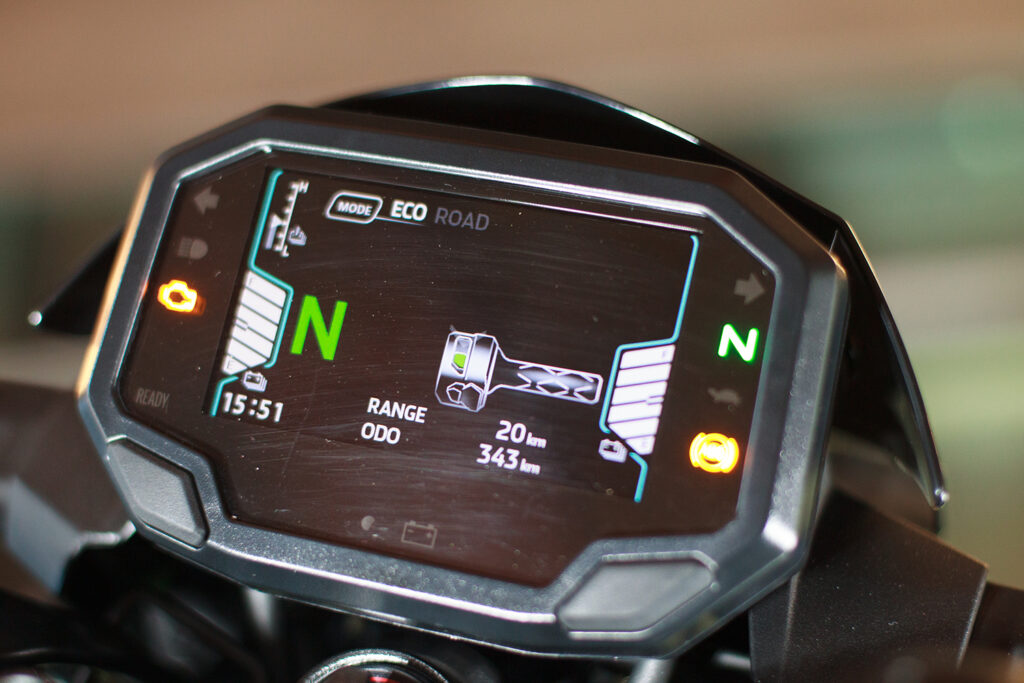
The Z e-1 uses a high-grade full colour TFT display for maximum visibility. The background hue can be manually switched between white and black, or it will adjust itself to the given level of lighting. You can also set the brightness levels at two different intensities.
Smartphone Connectivity
A number of instrument functions can be accessed using the smartphone application “RIDEOLOGY THE APP MOTORCYCLE”. Bluetooth technology enables riders to connect to their motorcycle wirelessly. A number of functions are available:
- Vehicle info
- Riding log
- Telephone notices
- Tuning – General settings
- Communication (Sharing)
- Statistics
- Maintenance log
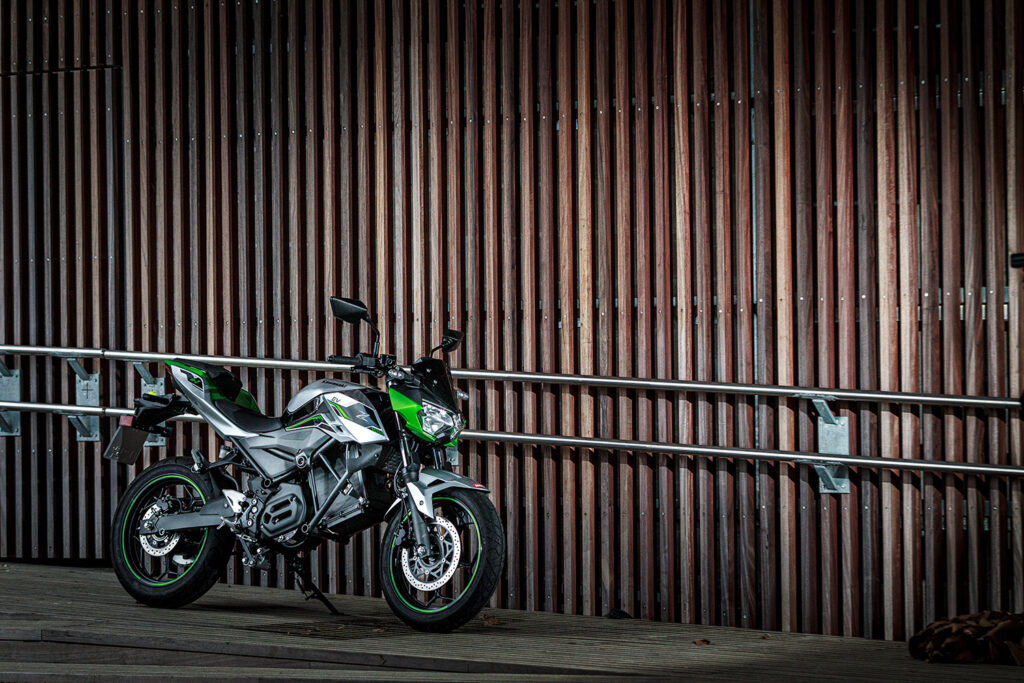
Price
The 8,439 EUR you spend on this electric motorcycle will be worth it — this Z e-1 comes with a range of practical features, including ABS, riders connectivity, a 4-year warranty and access to a local dealer network that provides professional services after purchase. Not many startups grant these advantages when their motorbikes are bought online. If you want a more “sporty” look, the Ninja e-1 with a fullfairing bodywork costs 9,039 EUR.
Author: Guy Salens | Pictures ©Thierry Dricot & Kawasaki
Thx to Deschouwer 2.0 for all the warm coffees :))
